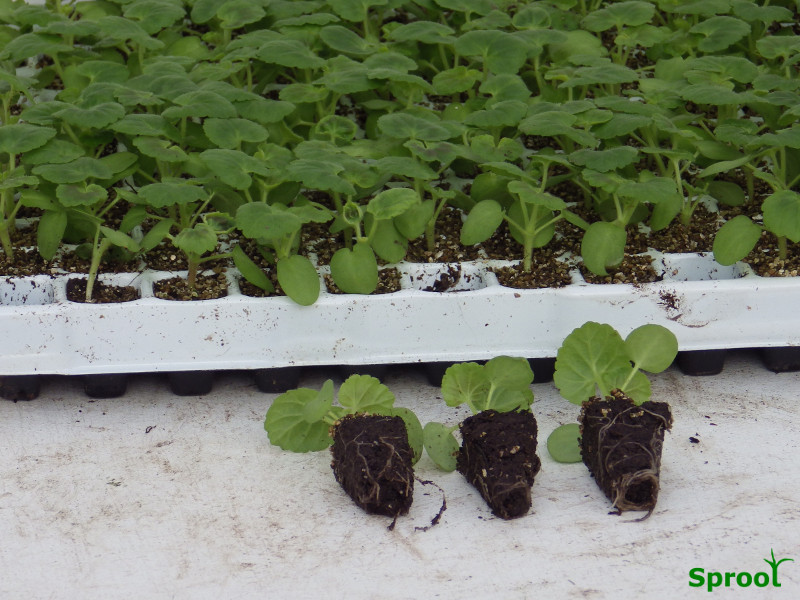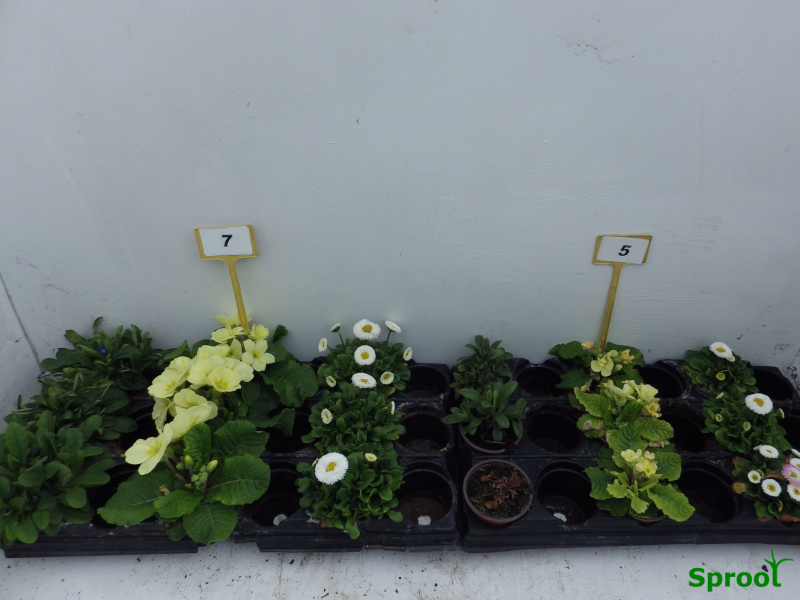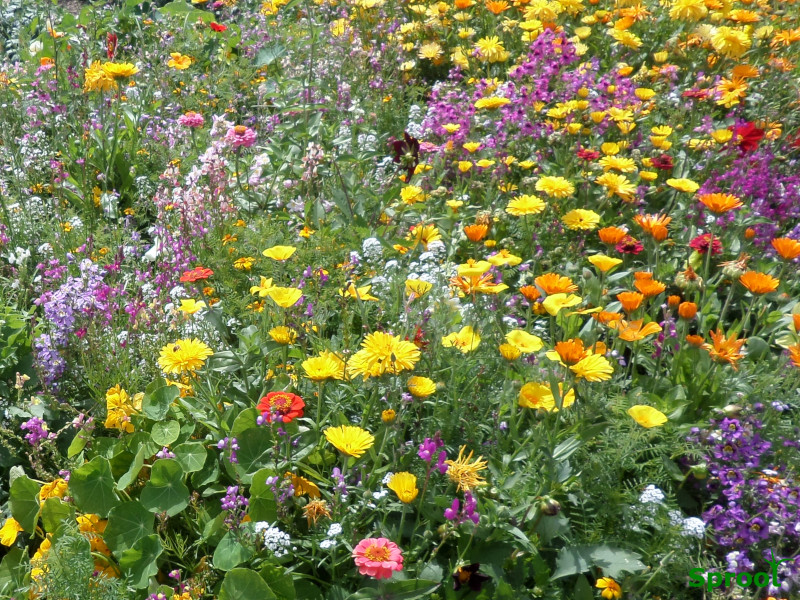Potting plants
There are two kinds of potting
potting for growth or potting for health find out more
Potting for growth
This is like moving a baby from a cot to its first bed, you are just giving it room to grow. When we pot plants into bigger containers we are expecting them to grow bigger.
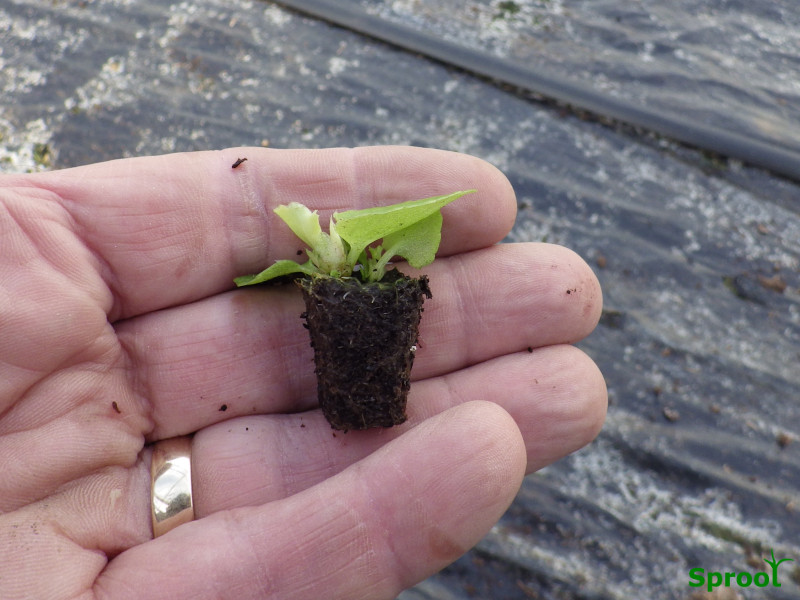
Potting for growth for more information
Potting for health
If potting for growth is about feeding the child, then potting for health is about the looking after the adult. When the plant is fully grown, we need to find a way to maintain the plants health as middle age spread is a distinct possibility, if we keep moving to bigger pots. You don’t have to keep re-potting it is perfectly normal to leave your plant in the same pot for years. What we need to do is find a way to keep the roots growing and the plant healthy.
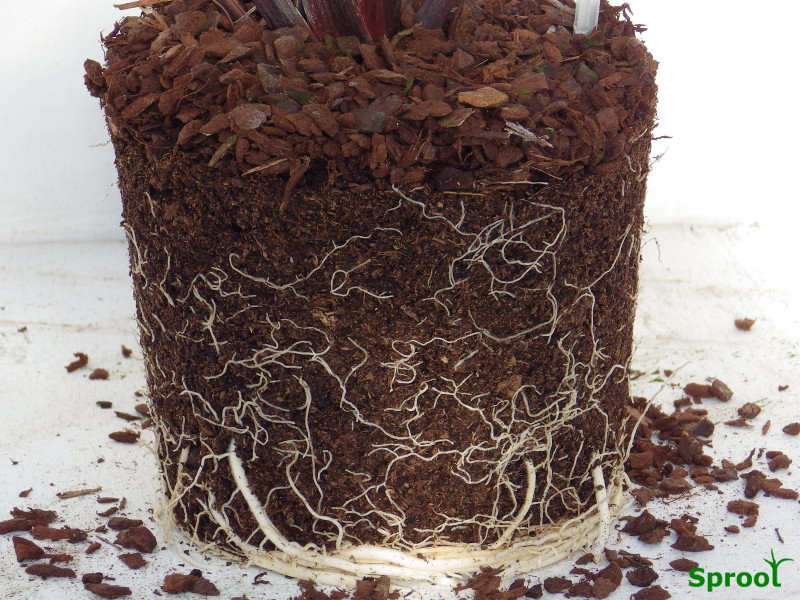
Potting for health for more information
Potting do I need to ?
To support new growth
This is a picture of two small conifers, showing that they can grow quite big, without potting into a bigger pot.
The one on the right is actually one year older than the one on the left, it is still quite happy with a plentiful supply of water and food. However it would fall over in a slight breeze, so it makes sense to move it into a bigger pot.
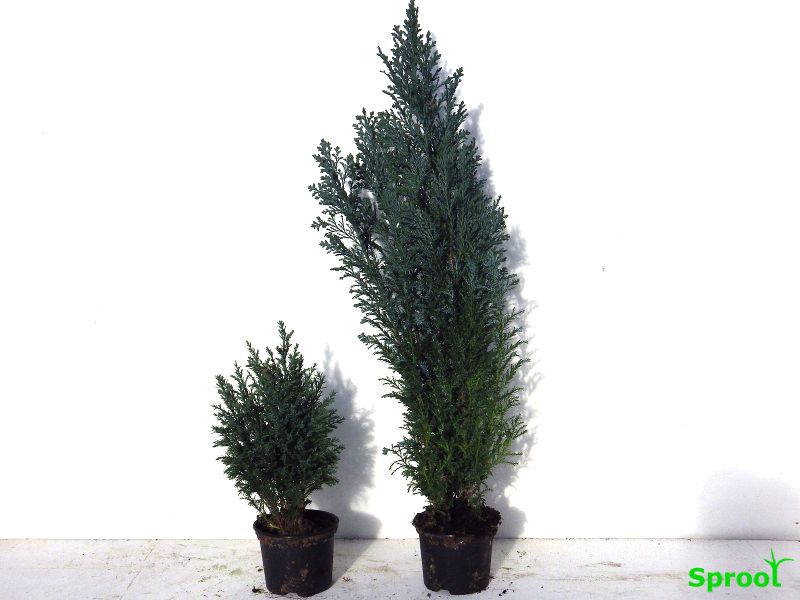
Potting small plants into new pots gives them room to expand and grow.
If you leave them in a small pot the plants will remain small.
With these tropical banana plants it has had a dramatic effect, the plants are the same age but one has had more compost to play with.
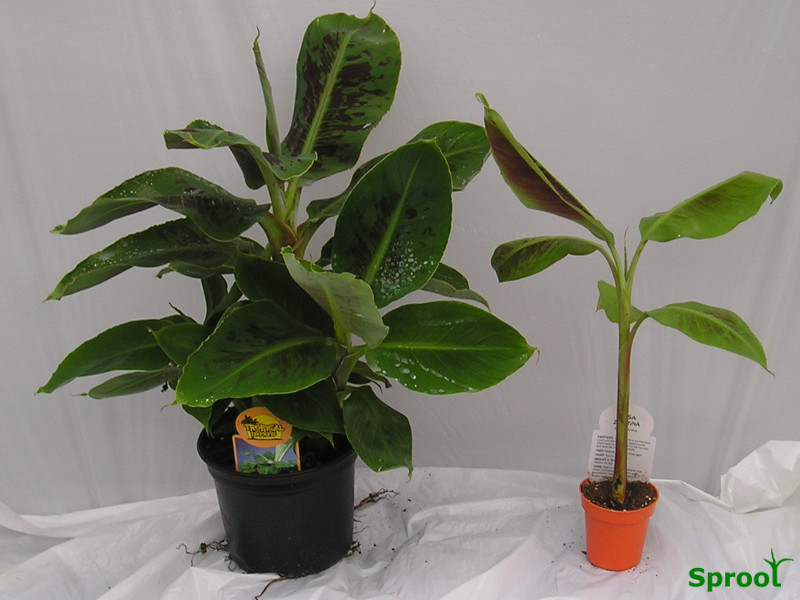
New Roots
Quite often the reason we pot plants is to encourage new roots, in particular root tips, roots take most of their nutrients and water through the root tips, to help our plants grow we need to maximise the root tips.
In the garden plants can send out deep or spreading roots into the soil and are happy to live like that.
When we grow plants in pots we are restricting the roots and they become reliant on us for water and food, so potting makes sense.
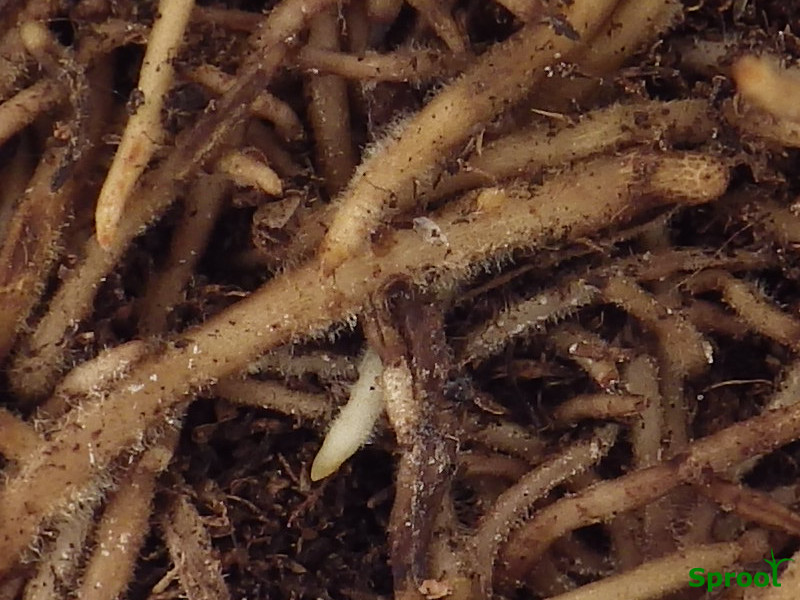
What if I don’t pot my plant
Well as long as it is kept fed and watered, it will survive, it will grow slowly, a bit like the banana plant in the picture.
What if I pot my plant and it didn’t need it
In most cases all that will happen is that it grows bigger, with some plants it may affect the flowering and it could end up taking up more room than you want.
Some plants that like to be root bound or have dry roots won’t like the bigger pot for a while but will still get grow.
Is potting difficult ?
Every year on nurseries millions of plants are potted, most by robotic machines and some by hand, all with minimal losses so why do people worry so much about it.
A quick check online shows there is a lot of conflicting advice
-You should only pot in a slightly larger pot
-You must trim the roots
-press the compost down firmly
-always put a layer of gravel or broken pots for drainage
-never put a layer of gravel in the bottom
-pot when the soil is always dry and doesn’t seem to hold moisture for very long
-pot when roots are growing out the bottom of the pot, or over the top of the soil
-when the pot looks as if it’s ready to bust open
-when the plant has grown so tall that the pot keeps falling over
-The plant is slow to grow or seems to have stopped growing
None of it is bad advice they are just applying hard and fast rules to plants, forgetting that nobody has told the plant.
Usually they show root bound plants suggesting they need immediate potting but quite often they are Spider plant (chorophytum) which actually enjoys being root bound the thick fleshy roots are storing water for use later.
see our Potting for growth guide for new plants
and Potting for health guide for older plants.
When to pot ?
You can pot plants at anytime of the year, but common sense says pot or repot when the plant is actively growing. It should be warm enough for the new roots to develop. The quality of sunlight is also vital, on the nursery we know that if you add up all the sunlight in January it is only equivalent to one sunny day in June so it makes no sense to pot in the Winter. The type of plant is also important
House plants
These live in a constantly warm environment and can be repotted almost all year round, my preference would be spring and summer to take advantage of the stronger sunlight.
Summer plants
These are plants in a hurry, generally as a group they have to grow, flower and set seed by the end of the summer. So it is quite normal to pot them in the spring and early summer giving them enough room to develop. Some summer plants are can survive if they are kept warm over the winter and it would be quite normal to dig them up, repot them in the autumn and bring them indoors for the winter.
Outdoor plants
With outdoor plants there is normally a period of fast growth in the spring followed by slower growth or flowers in the summer before everything slows down in the autumn. For maximum effect you should pot to catch the spring growth but if you can’t pot in the spring don’t worry anytime is okay.
With outdoor plants the temperature of the soil or pot affects the growth of the roots, we don’t want to pot into cold soil, so spring summer and autumn is best.
It you buy bare root plants potting even in the winter is okay as it will protect the roots.
pic
How big a pot do I need
Nearly all the experts suggest moving into a pot 1″ or 2″ bigger for the younger readers this would be 3-5cm or about 2 fingers bigger. Unfortunately this is not very helpful advice, with some fast growing plants needing bigger pots and slow growing might prefer to stay put.
We need to look at our plant types again.
House plants
Generally they are slow growing and may not need re-potting even when root bound. Some well known ones that prefer to be root bound would be peace lily, spider plant, amaryllis, orchids and ficus. The best plan is to identify your plant and research it online it before potting.
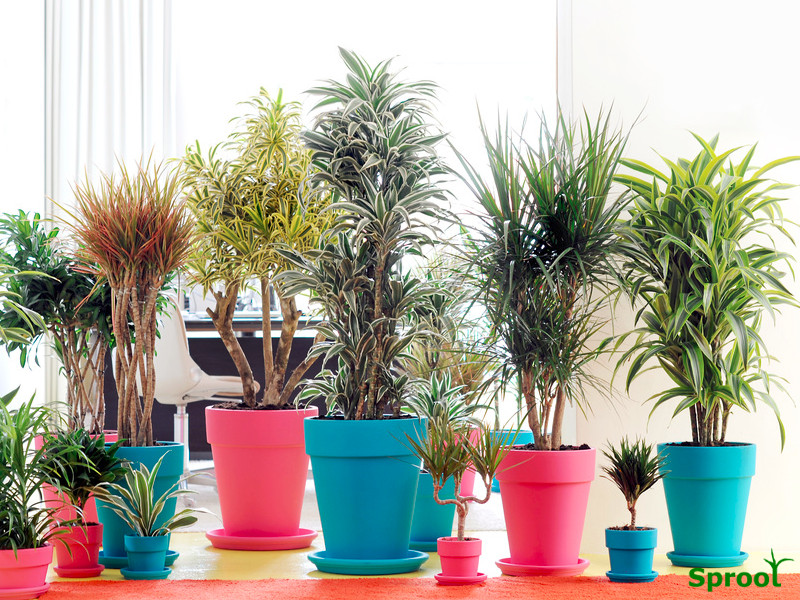
Summer plants
To take full advantage of the summer sun these plants need plenty of water, feed and room to grow so we might use much large pots at the beginning rather than repot 2 or 3 times.
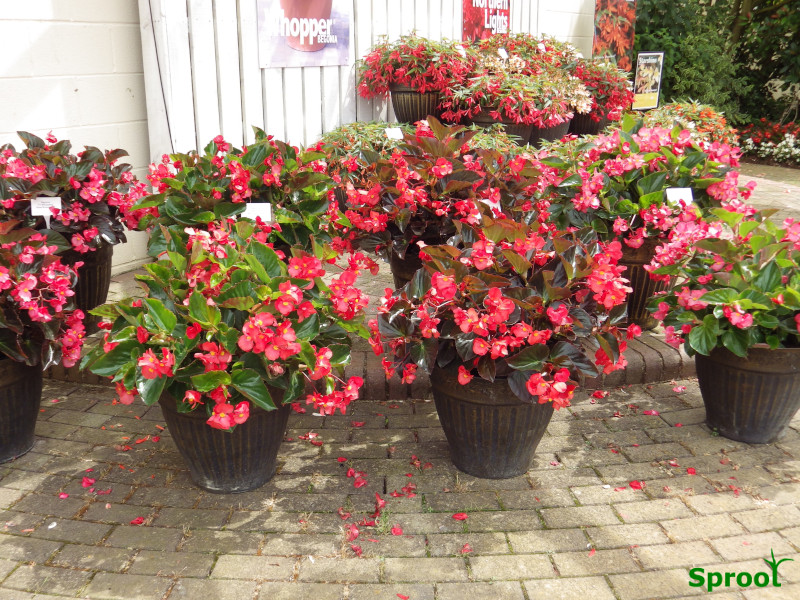
Outdoor plants
Most outdoor plants are going to live for a long time and are often slow growing so its worth spending some time to get the pot and compost correct.
Quite often we put them in their permanent home straight away which could be a big jump in pot sizes, but perfectly okay.
Eventually they will fill their final pots with root, we would then look at top dressing the pots rather than re-potting.
Outdoor pots can be quite heavy so often it is safer to pot them in their final position rather than move them when full of compost.

